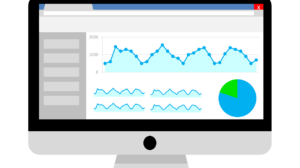What better time than the beginning of the year to reflect on how buyers’ behavior changes? Today we’re exploring B2B buyers: who they are, how they decide what to buy, and how have they been affected by the looming economic uncertainty.
Let’s dig in!
B2B Buyers Are Younger than You May Think
65% of B2B buyers are part of the Millennial and Gen Z generations. As more Gen Zers join the workforce and get promoted to decisional positions, this number will grow constantly.
Gen Z are (almost) digital natives. The oldest of them had access to internet in their childhood or pre-teen years. Millennials are the generation who essentially built the digital solutions we use today.
How to use this: digitally-savvy B2B buyers are the norm now. Make sure that your website is easy to navigate and that Buy buttons can be easily found. Self-service is also important: if your products or services can be sold directly, without endless sales calls and emails, do that!
B2B Buyers Will Draw Harder Lines between Nice-to-Haves and Must-Haves This Year
Budgets are shrinking everywhere, so expect B2B buyers to conduct more in-depth analyses before buying. You may even see some of them dropping services and SaaS solutions they used in the past.
How to use this: avoid trying to please everyone. Focus on potential buyers you can really help. This will prevent you from stretching yourself too thin and investing too many resources into leads that will never convert. Moreover, explain exactly what your product does. Help digitally-savvy buyers decide for themselves whether they need it or not.
Risk-Aversion Gets more Prevalent (and Long-Lasting Relationships Become more Important)
A consequence of shrinking budgets, B2B buyers’ risk aversion will translate into holding on to providers they already work with. Vetting new providers is costly and time-consuming, so if they already have a good relationship with you, they’re more likely to keep it.
Risk aversion also translates into more vetting for new providers. More than ever, B2B buyers need to make sure they’re choosing right.
How to use this: invest in loyalty programs and keep your existing customers close. It was always cheaper to sell to an existing customer than to acquire a new one – now it’s also less risky.
You will still need new clients, though. To get them, invest in a spotless online image, along with all the social proof you can gather: testimonials, success stories, case studies, reviews – publish everything you have to the point of obnoxiousness.
B2B Buyers Have Trust Issues
Since Millennials and Gen Zers spend most of them time online, it’s safe to say they were hacked or scammed at least once. Before they tap their credit card number or sign a contract with you, they will do a thorough check of your business.
How to use this: make sure that your online presence extends beyond your website. Government platforms (like the Better Business Bureau), review websites (like G2 or Yelp), and social media profiles all matter more than ever.
B2B Buyers Aren’t that Different from B2C Buyers (Just a Tad more Complex)
It’s finally time for the distinction between B2B and B2C to matter less. Sure, you may be doing business with another business but at the end of the day, those making the decisions are other humans, not impersonal legal entities.
How to use this: account for both emotional and rational factors that go into any purchase decision. B2B buyers have their own ethical code and set of values and it’s often not identical to that of the company they work for.
Make sure your values are aligned with theirs Invest in social or environmental initiatives if it’s what your buyers are passionate about.
More than anything, forget B2B versus B2C. Try H2H (Human to Human). No bots make buying decisions on their own (yet).
Need more strategy insights and analyses to help you build a resilient, future-proof business? Subscribe to my newsletter (it’s $0) and get them straight into your inbox every week.





